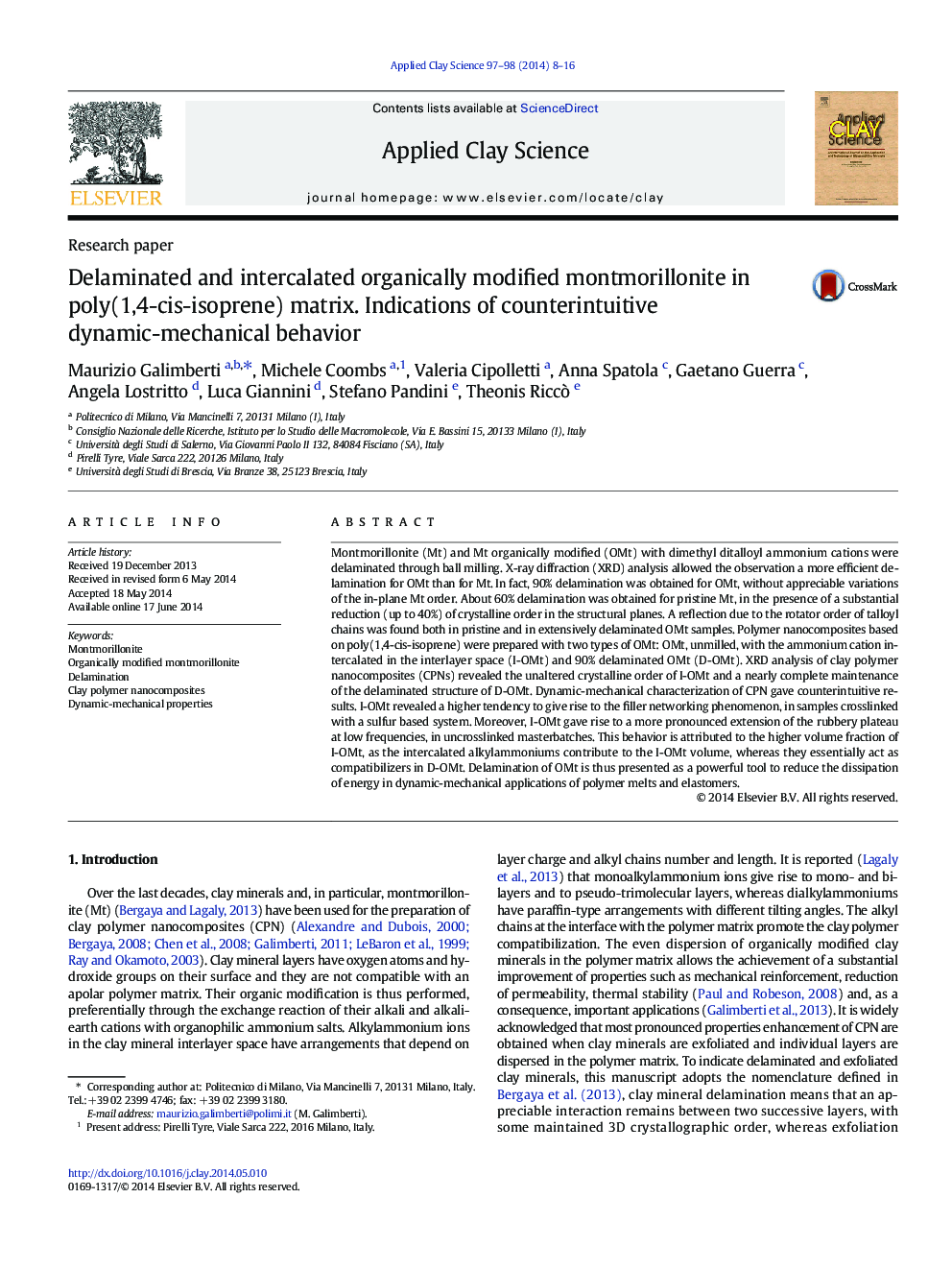| Article ID | Journal | Published Year | Pages | File Type |
|---|---|---|---|---|
| 1694650 | Applied Clay Science | 2014 | 9 Pages |
•Kinetics of delamination of pristine and organically modified montmorillonite•Correlation between organoclay organization and nanocomposite mechanical properties•Lower energy dissipation in elastomeric nanocomposites via organoclay delamination
Montmorillonite (Mt) and Mt organically modified (OMt) with dimethyl ditalloyl ammonium cations were delaminated through ball milling. X-ray diffraction (XRD) analysis allowed the observation a more efficient delamination for OMt than for Mt. In fact, 90% delamination was obtained for OMt, without appreciable variations of the in-plane Mt order. About 60% delamination was obtained for pristine Mt, in the presence of a substantial reduction (up to 40%) of crystalline order in the structural planes. A reflection due to the rotator order of talloyl chains was found both in pristine and in extensively delaminated OMt samples. Polymer nanocomposites based on poly(1,4-cis-isoprene) were prepared with two types of OMt: OMt, unmilled, with the ammonium cation intercalated in the interlayer space (I-OMt) and 90% delaminated OMt (D-OMt). XRD analysis of clay polymer nanocomposites (CPNs) revealed the unaltered crystalline order of I-OMt and a nearly complete maintenance of the delaminated structure of D-OMt. Dynamic-mechanical characterization of CPN gave counterintuitive results. I-OMt revealed a higher tendency to give rise to the filler networking phenomenon, in samples crosslinked with a sulfur based system. Moreover, I-OMt gave rise to a more pronounced extension of the rubbery plateau at low frequencies, in uncrosslinked masterbatches. This behavior is attributed to the higher volume fraction of I-OMt, as the intercalated alkylammoniums contribute to the I-OMt volume, whereas they essentially act as compatibilizers in D-OMt. Delamination of OMt is thus presented as a powerful tool to reduce the dissipation of energy in dynamic-mechanical applications of polymer melts and elastomers.
